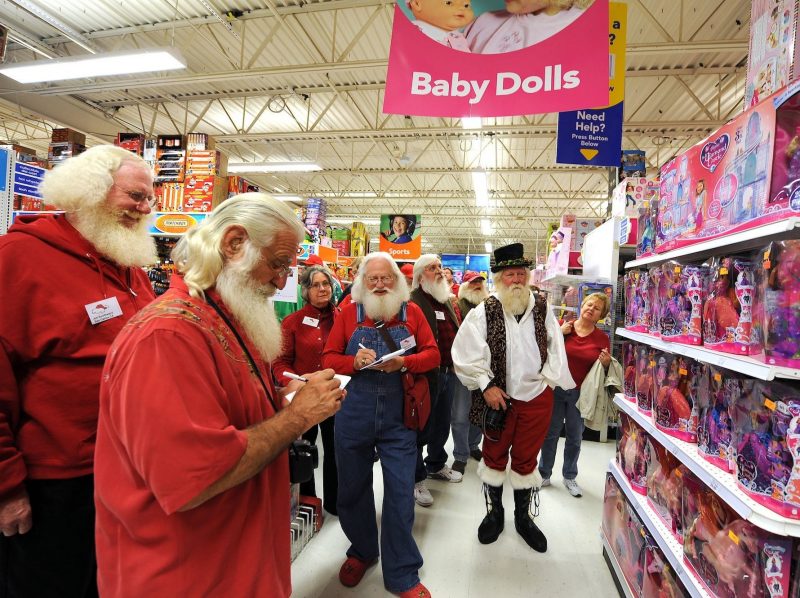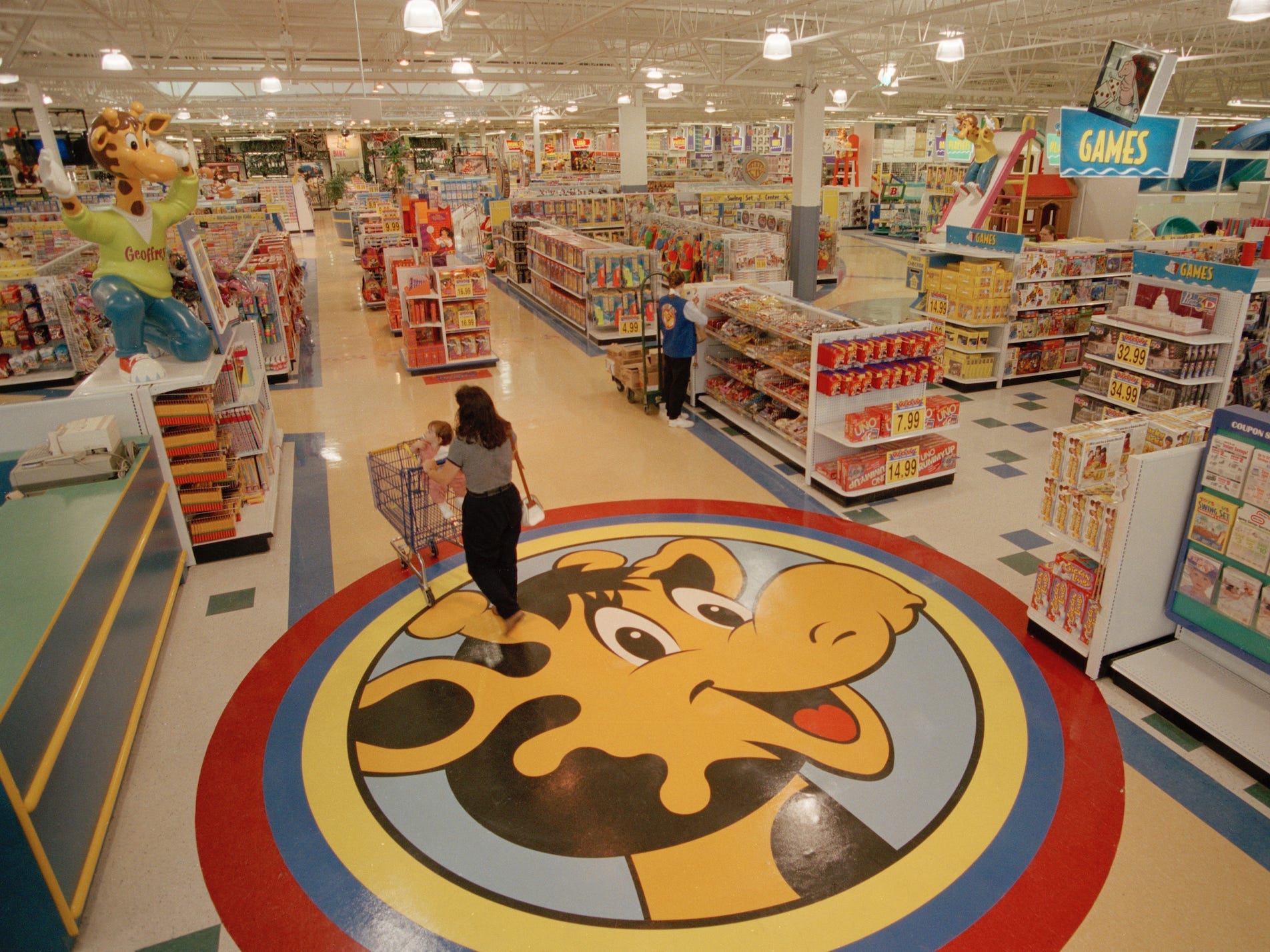- Toys R Us is still working toward a comeback after it was purchased by Tru Kids Brands in 2019, two years after the retailer filed for bankruptcy and permanently closed all of its stores.
- Efforts under Tru Kids Brands – including holiday pop-up shops and a relaunched website supported by Amazon – haven’t quite managed to embody the spirit of the iconic decades-old brand.
- We took a closer look at the tumultuous history of the company, from its swift rise and eventual downfall to its recent resurgence.
- Visit Business Insider’s homepage for more stories.
Toys R Us has been trying to make a comeback for the past year.
The beloved toy store seemingly rose from the dead in 2019 after it was purchased by Tru Kids Brands, which has since opened holiday pop-up shops and relaunched a website in the toy retailer’s name.
The revitalization efforts came after Toys R Us filed for chapter 11 bankruptcy in 2017 and – after failing to find a buyer to help refinance the company’s mounting debt – ultimately shuttered and liquidated all 700-plus stores in an emotional farewell.
Though the prognosis for the new Toys R Us remains uncertain, as current pop-up stores don’t actually generate any money for the brand – with toy manufacturers keeping all the profits – and the website only redirecting users to make purchases on Amazon, there’s no denying the company’s decades-long history as a top American toy seller.
After it was founded by Charles Lazarus in 1948, the company flourished by serving children and their families around the country - helping to put some of the most popular toys like Mr. Potato Head and Easy Bake Oven on the map.
We took a closer look at the history of the company over the years.
Toys R Us was founded in 1948 by Charles Lazarus after he returned from World War II. Lazarus was inspired by what was then the emerging post-war "baby boom" and sought a way to capitalize.

Source: History
The company started as a baby goods and furniture store called Children's Bargain Town in Washington, D.C. In the subsequent years, Lazarus began expanding into toys and the company officially adopted the name Toys R Us in 1957.
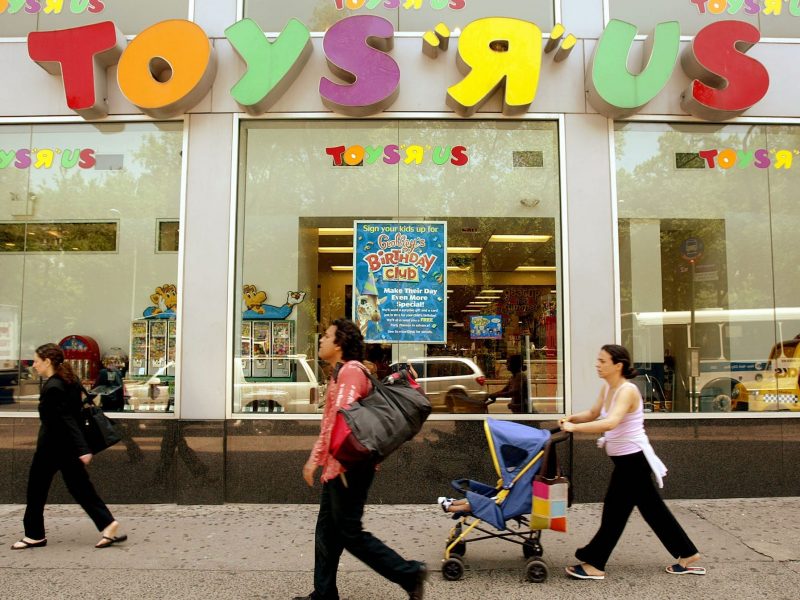
Source: History
Over the next two decades, Toys R Us played a significant role in putting iconic toys on the map for American youngsters, such as Mr. Potato Head.

Source: History
The same was the case for emerging technologies like the 16-bit Nintendo game console at the end of the century.
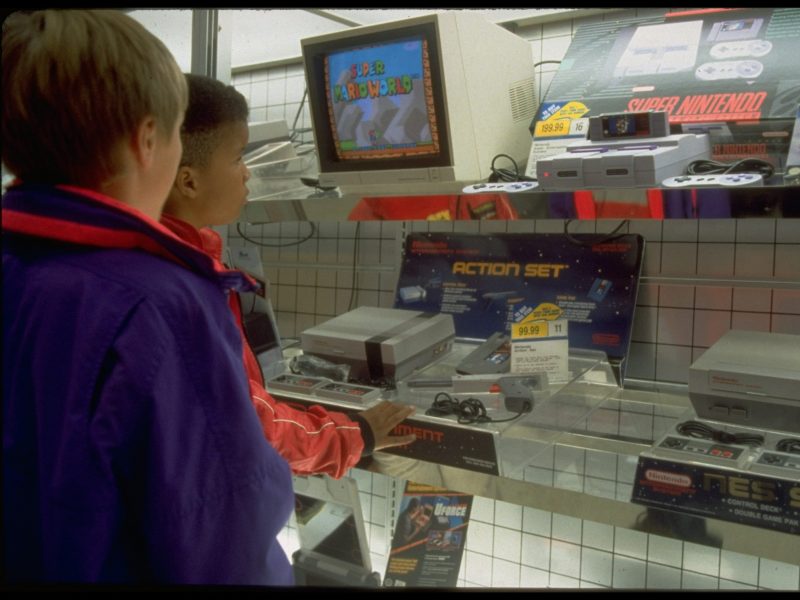
The company was also known for bringing big names in for promotional events or philanthropic work, such as NBA Hall of Famer Magic Johnson.

In 1966, Lazarus sold the company to Interstate Sales to help finance a larger national expansion. He transitioned from chief executive to head the Toys R Us division, which was already thriving at profits of $12 million.
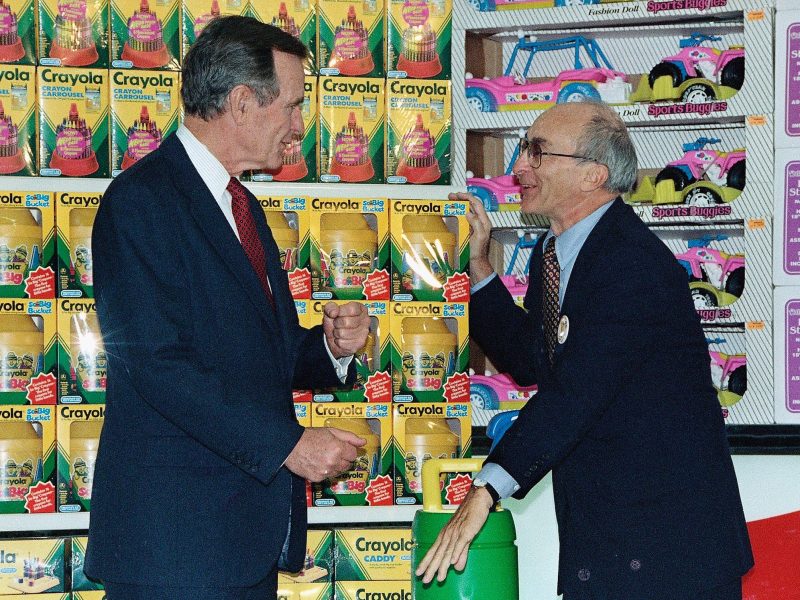
Source: Encyclopedia.com
In 1969, Toys R Us developed its beloved Geoffrey the Giraffe character, that became synonymous with the brand and its advertising campaigns over the decades.

Source: History
In 1974, parent company Interstate Sales filed for bankruptcy, and Lazarus handled the restructuring process.

Source: USA Today
Lazarus sold off struggling pieces of the business and got the company back on track so that in 1978, it was able to file its initial public offering.

In 1983, the company opened a clothing store spinoff called Kids R Us.
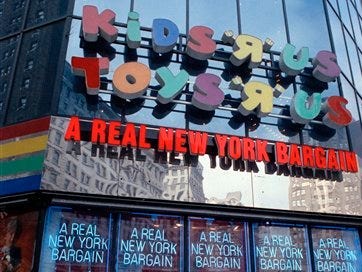
Lazarus eventually stepped down as chief executive in 1994, a move that signified a series of woes for the brand including high executive turnover and the looming pressure of ecommerce.

Building upon the success of Kids R Us, the company expanded into baby clothing with Babies R Us in 1996.

In the 1990s and early aughts, Toys R Us began expanding into major cities like New York, where it opened a multi-story store with a fully functioning ferris wheel in 2001.

Around this time, Toys R Us and its spinoff brands began to experience mounting competition from fellow big-box stores like Walmart and Target. In fact, in 1998, Walmart had already surpassed the company as the top US toy seller.

Source: The Associated Press
The mounting competition led to the eventual closure of Kids R Us in 2003.

In 2005, a conglomerate of private equity firms — including Bain Capital, Kohlberg Kravis Roberts, and Vornado Realty Trust — purchased Toys R Us for $6.6 billion, taking the company private in the process.
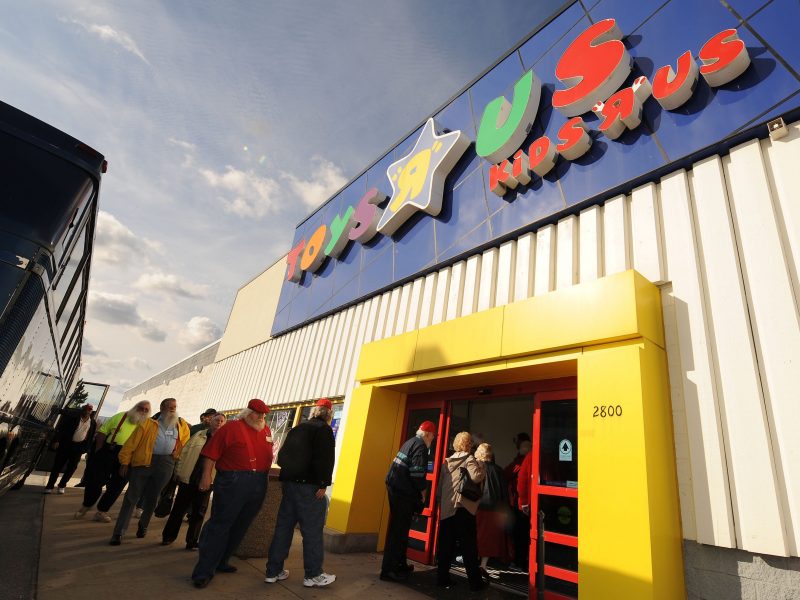
Source: USA Today
In an attempt to compete with the ecommerce boom, the company purchased Etoys.com and Toys.com in 2009. That same year, it bought KB Toys and the famed New York City toy store, F.A.O. Schwarz.

In 2010 the company registered once again to go public. However, by 2013 it withdrew from the process due to sales slumps.

Source: USA Today
In 2015, Dave Brandon – formerly the CEO of Domino's Pizza — took over the helm of Toys R Us.

According to USA Today, Brandon marked the fourth CEO over the course of 16 years "tasked with turning the company around."
Still the company continued to struggle, especially during the 2016 holiday season where it lost significant traction to ecommerce giants like Amazon, Target, and Walmart.

Source: Business Insider
The company officially filed for Chapter 11 bankruptcy protection in September 2017, in hopes of restructuring its mounting debt.

With its hopes for a financial savior ultimately dashed, Toys R Us announced in March 2018 that it would liquidate and permanently close all of its 700-plus stores across the US.

Source: Business Insider
That same year, the company issued an emotional goodbye as it prepared to permanently shutter its Toys R Us and Babies R Us websites.

"We encourage you to stop by your local store and take full advantage of hte deep discounts and deals available," the message read. "Thank you for your business and support over the years."
It was later announced that gift card holders could use any remaining funds at Bed Bath & Beyond stores.
Source: Business Insider
The CEO of the toy company MGA Entertainment issued a last-minute bid of $890 million to save the company, an offer that was ultimately rejected.

Throughout the rest of 2018, stores like Walmart began to position themselves to take over the void left behind in the market by Toys R Us – adding mass amounts of baby-related products on shelves.

By fall of 2018, abandoned Toys R Us stores had bleakly been temporarily converted into Halloween costume shops across the country.

Source: Business Insider
In February 2019, Toys R Us appeared to rise from the dead when Tru Kids Brands purchased the rights to the company and its Geoffrey the Giraffe mascot with plans to revitalize it.

Source: Business Insider
Later that year, Tru Kids Brands announced it would open a series of holiday pop-up stores under the Toys R Us name, which would sell popular toys directly from manufacturers.

Source: Business Insider
In October 2019, the company announced it was back online but with a catch — you couldn't actually buy anything directly from the Toys R Us site. Instead, users would be directed to make purchases from Target.com.

Source: Business Insider
In fall 2019, empty Toys R Us stores were once again used for Halloween purposes — this time to host haunted houses.

In August 2020, it was confirmed that Toys R Us had ended its partnership with Target, and would now partner with Amazon as its fulfillment partner.

Source: Business Insider
Ultimately, while Toys R Us is "back," it appears it simply will never be what it once was.
